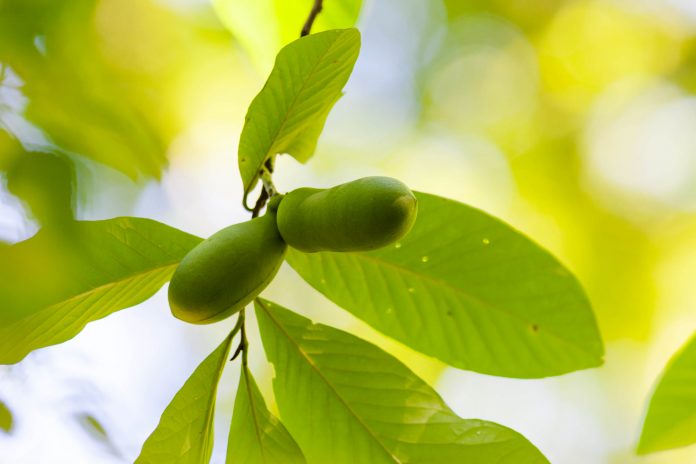
The short answer is, YES. Trees contribute to agriculture in Ohio in multiple ways. But it gets a little tricky when you try to parse out the details of those contributions. One of the reasons it’s tricky is due to the terms we use to place trees in our agricultural categories.
What is a tree farm?
If you search the internet for tree farms in Ohio this time of year, it will likely lead you to a list of Christmas tree farms. However, when the Ohio Tree Farm Committee certifies an Ohio Tree Farm, they are not working with fruit or Christmas Tree growers. They are working with private woodland owners.
So, let’s start with what is a certified Ohio Tree Farm. Using the American Tree Farm System (ATFS) criteria, the Ohio Tree Farm program certifies tree farms in Ohio. To be a Certified Tree Farm in Ohio, tree farmers must agree to manage their forests to produce quality timber in a sustainable manner that protects water, wildlife and recreational values.
Perhaps you’ve seen the Certified Tree Farm signs. The four segments of the sign are Wood, Water, Wildlife and Recreation, emphasizing this integrated approach to the management of our woodlands.
Celebrating Ohio’s forest economy
Ohio forests produce some of the best hardwoods in the world! Foreign buyers race to purchase our timber. With the availability of high-grade timber, Ohio ranks number one in the nation for hardwood furniture production.
Ohio is also a leader in white oak barrel production. For bourbon drinkers, that’s a pretty big deal. All tallied, forest products contribute $39 billion annually to Ohio’s agricultural economy. Ohio’s forests also provide much of the wildlife habitat in the state. Hunting, Fishing, Watercraft and Parks combined contribute another $12 billion of economic impact in Ohio annually.
It’s easy to make the connection between wildlife habitat and hunting. But healthy woodlands also contribute to cleaner, cooler water which improves fishing and other water sport activities.
Tree crops in Ohio
Although crop trees are not considered part of “forest products,” they certainly contribute to agriculture in Ohio. Fruit and nut growers manage their trees to harvest the fruit they produce, not the timber. With nearly 200 commercial apple growers in the state, Ohio is one of the top ten apple producers in the country. Other tree fruits grown in Ohio include peaches, cherries, pears and pawpaws.
Pawpaws. Pawpaws have a rich, cultural heritage that is driving demand for this fruit. The Ohio Pawpaw Festival is one reason pawpaws have grown in popularity. Savvy fruit and nut growers have learned to weave agritourism into their business model by offering pick-your-own fruit options and weekend festivals. The Ohio Pawpaw Festival just celebrated its 26th anniversary and is one of the longest-running and best-attended pawpaw festivals in the U.S.
Pawpaws even have a national day. The third Thursday in September is National Pawpaw Day. In 2009, Ohio recognized pawpaw as the state fruit. Additionally, fall festivals featuring apples, cider and family activities are a long-standing tradition for fruit growers.
Nuts. Nut growers are another group that harvests and sells tree fruit commercially. The two main nut crops in Ohio are walnuts and chestnuts. Ohio typically sells over 1 million pounds of black walnuts. Many of these walnuts are collected from the wild whereas commercial chestnuts are orchard-grown.
Ohio chestnut production lags demand and growers have no problem selling everything they harvest. Sold out is a good problem for every grower to have.
Christmas. Ohio is also one of the U.S. top 10 producers of Christmas trees. In a Venn diagram, Christmas trees would hold that place where forestry, agriculture, horticulture and agritourism overlap.
One of the many good things about Christmas Trees is that they can often be grown on land that is not suitable for row crops. One of the bad things about Christmas Trees is that they are feeling the stress of climate change more than many other crops.
Researchers refer to conifers as the “canary in the coal mine” when it comes to climate change. The conifer group includes pines, spruces, cedars, larches and firs, and each of these species is being stressed by reduced chilling days and increased insect populations due to warmer winters, increased drought, etc.
The good news is that public demand for Fraser fir Christmas trees is one driver for research looking at improved genetics to help conifers better cope with the changing climate. Trees remain one of our greatest defenses in battling climate change.
Trees are team players
Unlike wildlife, trees are unable to pick up and move when times get tough. Over the eons, trees have learned to provide their community with fruit, nuts, shade and shelter in exchange for services trees require.
Through photosynthesis, trees have learned to scrub carbon from our atmosphere and to convert the sun’s energy to feed itself from the tips of its roots to the top of its crown. Delicious leaves will feed caterpillars that will be plucked by birds to feed hungry nestlings. These same leaves will fall to the ground to recycle nutrients to the soil, feeding yet another biome that will, in turn, support the tree. That is only a small sampling of the benefits trees provide. As humans, we are unable to manage our lives with anything close to this kind of efficiency.
We should celebrate trees in all seasons. Plant a tree, climb a tree, harvest a tree, admire or even hug a tree. But for goodness sake, let’s care for the trees on our land. And please, ALWAYS work with a professional forester when planning a timber harvest.












